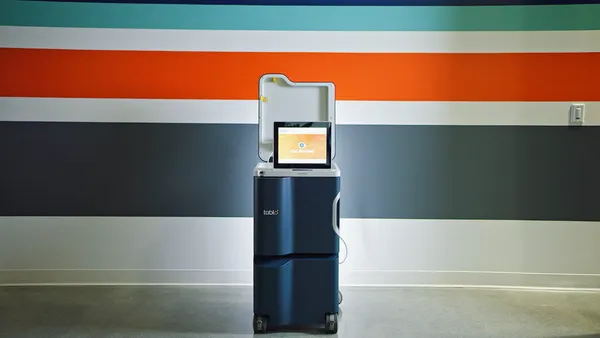Dive Brief:
- National health organizations including the American Hospital Association released a report Tuesday naming six key elements of interoperability as: security and privacy; more usable solutions; cost-effective, enhanced infrastructure; improved standards; connecting beyond EHRs; and shared best practices.
- EHR vendors and health IT firms need to do more field testing, document adherence to standards and eliminate tolls for data sharing, the report contends. They should also be more transparent about potential realistic technical solutions and avoid user interfaces that complicate, rather than ease, information sharing.
- The groups call for medical device manufacturers to improve security amid the threat that unsecured devices pose to health systems.
Dive Insight:
The goal of seamless interoperability across the healthcare spectrum is still elusive, with hospitals, payers and other stakeholders using a patchwork of IT systems to share health information.
According to a recent Office of the National Coordinator for Health IT analysis, one-third of hospitals use four or more methods to routinely receive patient care records from outside sources, while a fourth don't use any electronic method at all. Most of those that use electronic methods to send and receive summary of care records back that up with manual methods.
On the medical device side, hospitals are pushing manufacturers to boost security, expand "plug and play" functions and add lifecycle support.
"Medical device manufacturers must do more to confront the privacy challenges that unsecurable devices may pose to hospitals and health systems," the report said.
It also notes that more meaningful interoperability will encompass sharing of medical data from labs, traditional medical devices and wearables like Fitbit.
Barriers to exchange and interoperability include providers lacking EHRs or the capability to receive information, working across different vendor platforms, patient matching, add-on costs to send or receive data from outside settings and the need to customize interfaces. Varying standards for patient privacy across states and data types also hampers sharing.
Still, progress is being made, according to the joint agenda. Currently, 93% of U.S. hospitals allow patients to view their health records online, up from 27% in 2012, and 88% send records to ambulatory care providers outside their system, up from 37% in 2012.
Public-private partnerships like The Center for Medical Interoperability, a cooperative R&D lab focused on data sharing among medical technologies, including devices, and IT systems, are also helping to move the ball forward.
The groups also point to CommonWell and Carequality, two national data exchange initiatives that recently established connectivity — facilitating information sharing among 15,000 hospitals, clinics, pharmacies and other healthcare professionals and enabling Epic and Cerner EHRs to access data from disparate systems.
Other efforts include Nemaha County Hospital in Nebraska, which has cut readmissions by sharing continuity of care documents with all local providers, and a Tennessee Hospital Association network that allows 88% of the state's hospitals to exchange real-time admission, discharge and transfer alerts. The network tool can also be used by facilities without EHRs.
During HIMSS18, CMS Administrator Seema Verma told a packed room of healthcare leaders that data blocking would no longer be tolerated. "Let me be crystal clear, the days of finding creative ways to trap patients in your system must end," she said.
Meanwhile, industry is still awaiting an ONC rule to curb information blocking. The rule missed a 90-day window for Office of Management and Budget review and is now hobbled by the partial government shutdown, which furloughed OMB staff.
While hospitals need to get behind this for data analytics and telemedicine to really take off, payers, vendors and patients also have a role to play, the report says. For example, consumers need to engage with their online records and understand what the data means, and they need to understand what is and isn't protected under HIPAA privacy rules.











